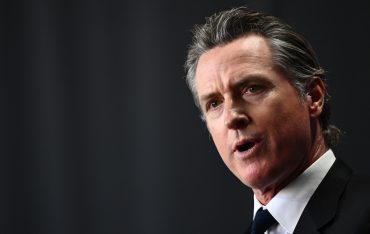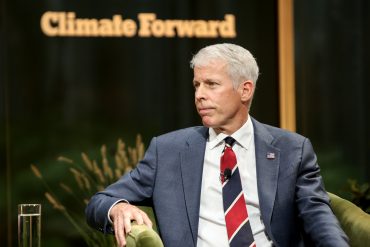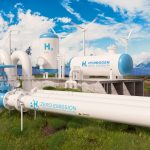
- Clean Energy
- Energy Policy
- Renewable Energy
Trump's $7.6B Energy Cuts Imperil 200K Jobs, Spark Fury
6 minute read

Trump Administration Axes $7.6B in Hydrogen Projects, Imperiling Western Clean Energy Future.
Key Takeaways
- Sweeping cancellations: Trump administration revokes $7.6 billion in clean energy grants across 223 projects spanning 16 states, targeting major hydrogen hubs in Pacific Northwest ($1 billion) and California ($1.2 billion)
- Economic fallout: Over 200,000 jobs threatened as cancellations ripple through heavy transportation, port operations, and clean energy sectors, with potential utility rate increases for residents
- Political battleground: Democratic officials launch legal challenges during 30-day appeal window, denouncing selective targeting of blue-state projects as politically motivated federal overreach
Introduction
The Trump administration revoked nearly $7.6 billion in clean energy grants Wednesday night, gutting hydrogen hub projects across the Western United States in the most aggressive rollback of climate infrastructure investment in recent memory. The Department of Energy’s cancellation of 223 projects across 16 states eliminates federal commitments to the Pacific Northwest Hydrogen Hub and California’s ARCHES initiative—regional networks designed to revolutionize clean fuel production for heavy industry and transportation.
The decision strikes at programs years in development, unraveling public-private partnerships expected to leverage billions in matching private capital. As Democratic governors and congressional leaders prepare legal challenges, the cancellations expose deepening partisan fractures over America’s energy future and raise fundamental questions about federal reliability in long-term infrastructure development.
Key Developments
The funding revocation decimates planned hydrogen infrastructure across the West, with Washington state absorbing 11 project cancellations under its share of the Pacific Northwest hub’s $1 billion federal commitment. California’s ARCHES hub, which secured up to $1.2 billion in approved funding, faces wholesale elimination of federal support for facilities intended to produce clean hydrogen for ports, trucking fleets, and industrial applications.
Energy Secretary Chris Wright defended the cancellations, asserting the projects “did not adequately advance the nation’s energy needs, were not economically viable, and would not provide a positive return on investment of taxpayer dollars.” The administration characterizes the revoked funding as eleventh-hour approvals rushed through during the Biden administration’s final months—grants it contends lacked rigorous financial scrutiny.
The timing amplifies political volatility, coinciding with broader government funding debates. Industry publication Fuel Cells Works reports the administration’s stance imperils multiple initiatives designed to establish hydrogen fuel production as a viable alternative energy source, potentially setting back America’s position in the global race for clean energy technology leadership.
Project recipients now face a compressed 30-day window to appeal the Department of Energy’s determinations, even as affected states mobilize legal strategies to challenge what they characterize as arbitrary and politically motivated federal action.

Market Impact
The cancellations vaporize billions in planned public-private partnerships structured to unlock substantial matching investments from heavy industry, trucking manufacturers, transit agencies, and seaports over 8-10 year timelines. These collaborations promised to generate thousands of high-wage jobs while stimulating economic activity across interconnected sectors—from hydrogen production facilities and fueling infrastructure to specialized transportation equipment and port modernization.
Energy markets confront acute uncertainty as the funding cuts strip federal backing from nascent hydrogen infrastructure networks. The reversal forces companies to fundamentally reassess clean energy strategies developed around federal partnership assumptions, creating immediate disruption to current operations and casting doubt on future investment plans.
According to Politico, industry participants voice alarm about cascading consequences: technological advancement delays, evaporating private sector confidence in hydrogen investments, and diminished competitive positioning against international rivals who continue aggressive clean energy buildouts. The cancellations threaten to fracture established timelines for carbon emission reductions in heavy transportation—sectors where hydrogen showed particular promise—while undermining the economic case for continued private capital deployment absent federal risk-sharing.
State officials warn that abandoned infrastructure projects could translate to higher utility bills as alternative compliance pathways prove more expensive, while job losses in construction, manufacturing, and operations ripple through regional economies that had oriented workforce development around hydrogen hub opportunities.
Strategic Insights
The selective architecture of project cancellations exposes a conspicuous geographic pattern: Democratic-led states absorb disproportionate cuts, raising questions about federal energy policy consistency. This approach signals a fundamental pivot from broad-based clean energy investment toward narrower, ostensibly market-driven programs—though critics contend the administration applies economic viability standards inconsistently across partisan lines.
The rupture exposes deepening tensions between federal energy priorities and state-level climate commitments. States like California and Washington maintain aggressive decarbonization mandates that now require alternative funding mechanisms or substantially expanded private sector partnerships. This dynamic may accelerate state-led financing innovations—including green bonds, carbon pricing revenues, or regional compacts—as jurisdictions seek to insulate climate policy from federal political volatility.
For the hydrogen sector, the moment constitutes a critical inflection point. Federal support retrenchment arrives precisely as global competition in clean energy technology intensifies, with European and Asian nations pouring subsidies into hydrogen infrastructure. American companies invested in hydrogen development must now navigate reduced federal backing while maintaining technological timelines—a challenge that may consolidate the industry around larger players with balance sheet capacity to weather policy uncertainty.
The cancellations also test whether market mechanisms alone can drive the energy transformation required to meet mid-century climate goals, or whether sustained federal investment remains indispensable to overcome entrenched fossil fuel economics.

Expert Opinions and Data
Congressional Democrats unleashed withering criticism, framing the cancellations as partisan punishment. Congresswoman Suzan DelBene condemned the cuts as transparently “politically motivated,” declaring: “President Trump’s campaign of political retribution continues, and hardworking Washingtonians are now part of the collateral damage. This politically motivated claw back of funds will result in significant job losses and increased utility bills in our state. The President of the United States is playing politics by targeting states that did not vote for him.”
California Governor Gavin Newsom delivered an equally scathing assessment: “In Trump’s America, energy policy is set by the highest bidder, economics and common sense be damned. Clean hydrogen deserves to be part of California’s energy future…We’ll continue to pursue an all-of-the-above clean energy strategy that powers our future and cleans the air, no matter what DC tries to dictate.”
Washington Senator Patty Murray called the action a “blatant attempt to punish the political opposition,” accusing the administration of treating “families and livelihoods like pawns in a political game.” Democratic officials across affected states characterize the move as “illegal,” “partisan,” and an “abuse of power,” with multiple attorneys general signaling intent to challenge the cancellations in federal court.
The California Hydrogen Coalition warned that abandoned projects jeopardize not merely individual facilities but entire regional ecosystems of suppliers, skilled workers, and complementary infrastructure that required years to cultivate—investments that cannot easily be reconstituted if federal policy reverses again.
Conclusion
The $7.6 billion funding cancellation detonates immediate uncertainty across Western hydrogen projects while igniting legal and political battles that promise to reshape federal-state energy dynamics. As project recipients scramble to craft appeals within the 30-day window, Democratic officials mobilize court challenges that will test the administrative boundaries of executive energy authority.
The administration’s action fundamentally recalibrates federal clean energy policy, shifting primary responsibility for hydrogen development to state governments and private sector partners operating without federal risk buffers. This transition presents a crucible test: whether market forces and state determination can sustain momentum absent federal partnership, or whether the withdrawal exposes the fragility of America’s clean energy transition.
As the 30-day clock ticks and battle lines harden, one certainty emerges: the cancellations have transformed clean energy infrastructure from technical challenge into political battlefield, where technological progress increasingly depends not on engineering breakthroughs but on navigating the turbulent crosscurrents of partisan governance.







